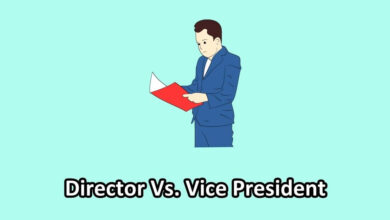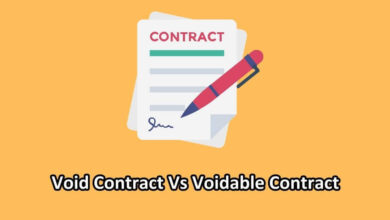Welcome to 2023, where the debate between private and public schools continues to ignite fiery discussions among education enthusiasts! With both types of institutions vying for the top spot in providing quality education, it’s time to delve into this age-old battle and determine who truly takes the lead. So grab your thinking caps as we explore the ins and outs of private vs public schools, uncovering fascinating insights that might just challenge everything you thought you knew about our educational system. Are you ready? Let’s dive right in!
Private Vs Public Schools (Comparison Chart)
| Private Schools | Public Schools |
|---|---|
| A private school refers to an educational institution that operates independently and is not funded or controlled by the government. | A public school is a government-funded educational institution that is open to all students in a particular district or region. |
| Private schools usually have a much lower student-teacher ratio compared to public schools. | A public school has larger class sizes which can result in less individual attention for students. |
| It often offers more extracurricular activities than public schools due to the availability of additional resources such as funding from alumni and donations from parents or other donors. | It often offers fewer extracurricular activities than private schools due to limited resources. |
| In private education, tuition is typically significantly higher than that of public school education; however, there are some scholarships available to help offset the cost of private school tuition for those who qualify financially. | Public school education is free for all students who meet the residency requirements. |
| Private schools tend to have higher salaries for teachers than public schools, which can attract more experienced and qualified teachers to the job. | The public school’s education sector tends to have lower salaries for teachers than private schools. |
| They often utilize standardized assessments to evaluate student learning. | They generally use state-mandated tests and assessments designed by the state board of education. |
| While some private schools provide transportation services, most require parents to be responsible for transportation arrangements. | Public schools are required by law to provide transportation services for students who live within a certain distance from the school. |
| Private schools generally have a very active parent community that is involved in the school’s decisions and activities. | Parental involvement is not always seen in public schools due to larger class sizes and more diverse student populations. |
What is a Private School?
A private school is a school that is privately funded and typically has more autonomy than public schools. Private schools are usually not subject to government regulation and are often founded by religious or other private organizations. They may have their own admissions criteria, curriculum, and teacher qualifications.
They are mostly funded by the student’s tuition fees, but may also receive some funds from private donors and grants. Private schools typically have smaller class sizes and offer more individualized instruction than public schools.
What is a Public School?
A public school, on the other hand, is a school that is funded and operated by the government. It is open to all students regardless of their religion, race, or financial background, and is usually free for those who attend.
Moreover, public schools are regulated by a state board of education, and teachers must be certified in order to teach in the public school system.
Advantages and Disadvantages of Private Schools vs. Public Schools
Pros of Private Schools:
- Smaller classroom sizes and more individualized attention.
- Access to higher levels of academic excellence and increased resources.
- More control over curriculum, teaching methods, and school activities.
- Ability to instill values such as faith-based learning or single-gender education
Cons of Private Schools
- Tuition costs can be prohibitive for some families.
- Limited access to extracurricular activities compared to public schools.
Pros of Public Schools
- Open admissions policy, allowing any student the opportunity to attend a public school in their district.
- Variety of extracurricular activities available.
- Strong focus on diversity within the student body.
- Lower tuition costs in comparison to private schools
Cons of Public School
- Larger classrooms with less individualized attention for students.
- Potential difficulty adapting curriculums to meet the needs of all students.
Key Differences Between Public and Private Schools
- Academic Performance: Private schools tend to perform better academically than public schools, with smaller class sizes and higher-quality teachers and curricula. On the other hand, public schools have larger class sizes, more diverse student populations, and less experienced teachers.
- Impact of Class Size on Private and Public School Education: Private schools usually have a much lower student-teacher ratio compared to public schools, which can result in increased individual attention for students in private schools. This allows for better learning opportunities and improved academic performance in private schools.
- Extracurricular Activities and Opportunities: Private schools often offer more extracurricular activities than public schools due to the availability of additional resources such as funding from alumni and donations from parents or other donors. These activities could include interscholastic sports teams, musical ensembles, theater groups, or clubs focused on community service or academic competitions.
- Teacher Pay: Private schools tend to have higher salaries for teachers than public schools, which can attract more experienced and qualified teachers to the job.
- Transportation: While some private schools provide transportation services, most require parents to be responsible for their children’s transportation to and from school. In contrast, public schools usually provide busing or other forms of transportation services, although this may vary by district or state regulations.
- Parental Involvement: Private schools generally have a very active parent community that is involved in the school’s decisions and activities; however, this level of involvement is not always seen in public schools due to larger class sizes and more diverse student populations.
Factors to Consider When Choosing Between Private and Public Schools
The decision of whether to send a child to a private or public school is one that must be carefully considered. There are many factors to take into account when making this choice, and each family will have different priorities. Some of the key factors to consider include:
– Cost: Private schools can be expensive, especially if you are looking at top-tier schools. Scholarships and financial aid may be available, but it is important to consider the overall cost before making a decision.
– Location: Private schools are typically located in more affluent areas, which may not be convenient for families who live in other parts of town or in rural areas.
– Class Size: Private schools often have smaller class sizes than public schools, which can provide a more intimate learning environment. However, class size is not always indicative of quality; some public schools also have small class sizes.
– Academic Rigor: Private schools tend to offer a more challenging academic curriculum than public schools. This may be beneficial for students who are academically inclined and want to be challenged, but it could also lead to frustration and burnout for students who are struggling.
– Extracurricular Activities: Both private and public schools typically offer extracurricular activities, but the selection may be more limited at public schools. If your child has their heart set on playing a particular sport or participating in a certain activity, make sure that the school you’re considering can accommodate them.
Concluding Thoughts on the Future of Education in the Year 2023
It is safe to say that the future of education lies in the hands of those who are passionate about making a difference. While it is impossible to predict everything that will happen in the next five years, it is clear that private and public schools will continue to compete for students and resources. In the end, it is up to each individual school to decide what works best for their community.
As we move into the future, it is important to remember that education is constantly evolving. What may work well today may not be effective tomorrow. It is important to stay ahead of the curve and be willing to change with the times. The schools that are able to do this will be the ones that thrive in the years to come.



